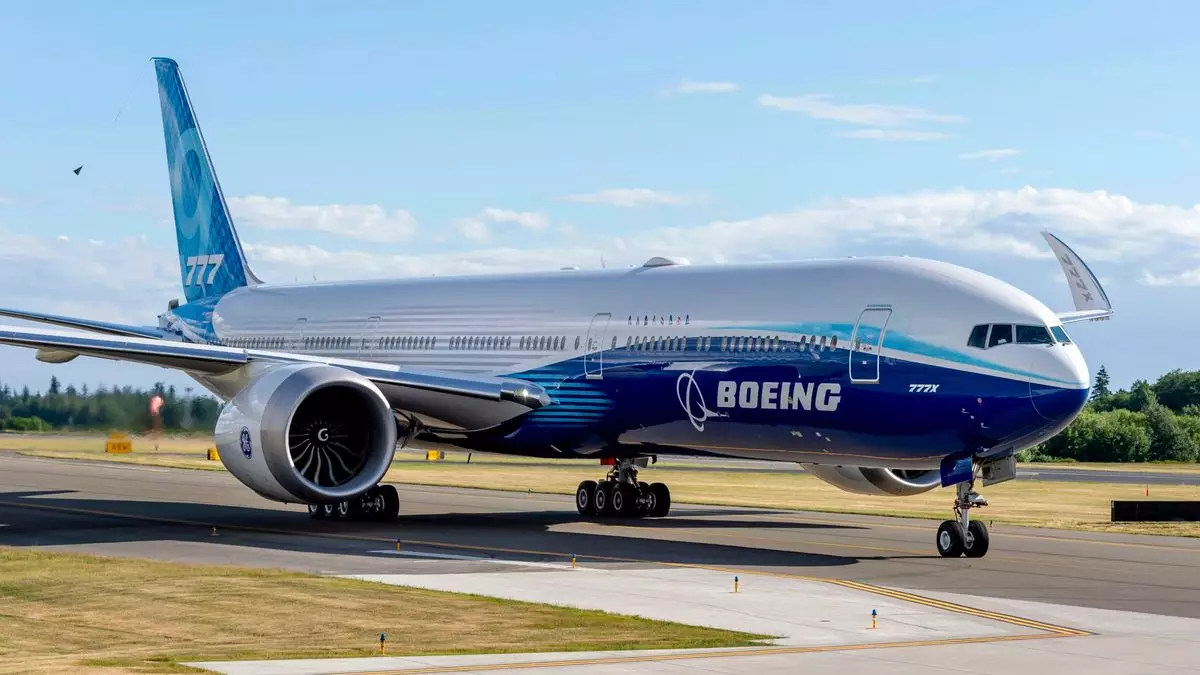In a critical moment for both Boeing and the International Association of Machinists and Aerospace Workers (IAMAW), an enhanced contract proposal has emerged, aimed at resolving a protracted strike that has severely disrupted aircraft production for over a month. The IAMAW, representing around 33,000 machinists, indicated they would hold a ratification vote to review this proposal. This new offer reflects both an acknowledgment of the strikers’ demands and a recognition of the financial pressures the ongoing walkout has placed on Boeing.
The proposal includes a significant pay increase of 35% over four years, a modification from the 30% hike previously proposed. Additionally, it raises the ratification bonus to $7,000 per worker, showing a clear responsiveness to the workers’ calls for better financial compensation. However, the absence of a restored traditional pension plan highlights the complexities and challenges of labor negotiations in contemporary industries.
The ongoing strike, which began on September 13 after a decisive rejection of a Boeing offer by union members, has demonstrated the strength and determination of the workforce. The union’s leadership refrained from endorsing earlier offers, revealing the disconnect between top officials and the interests of the rank-and-file workers. The resounding strike action has served as a powerful reminder of the workers’ resolve to achieve equitable compensation and job security, especially in light of soaring inflation and economic uncertainty.
As the strike continues, the implications extend beyond Boeing’s factories, affecting suppliers such as Spirit AeroSystems, which announced impending furloughs for approximately 700 employees. This ripple effect underscores the interconnected nature of the aerospace industry, where a slowdown in production at Boeing can have severe consequences for its supply chain.
With new CEO Kelly Ortberg at the helm, Boeing is under intense pressure to stabilize its financial standing amidst declining production rates. The announcement of 17,000 layoffs signifies a dramatic response to the strike’s impact on Boeing’s operations. This underscores the delicate balancing act faced by the company in navigating labor negotiations while simultaneously addressing its financial challenges.
The discussions around funding strategies, including a push for potentially raising $25 billion through new stocks or debt, highlight the urgency of the situation. Such financial maneuvers may be necessary to maintain operational viability, but they also raise questions about the long-term sustainability and health of the company.
The introduction of the improved contract proposal can, in part, be attributed to intervention from federal officials, including acting Labor Secretary Julie Su, who engaged with both the union and company representatives. This involvement reflects a broader governmental concern regarding the wider economic ramifications of prolonged strikes, particularly in such a pivotal industry as aerospace.
While the union leadership has positioned the new offer as “worthy of consideration,” their lack of an outright endorsement indicates a cautious approach. The need for comprehensive discussion with union members suggests that the resolution of this strike will require more than just financial incentives; it will demand an assurance of long-term job security and the reinstatement of pension benefits or similar retirement plans.
As the IAMAW prepares for the ratification vote, the outcome will serve as a bellwether for labor relations within the industry and may set a precedent for future negotiations. Should workers approve the deal, it could signal a temporary easing of tensions; however, should they reject it, it could prolong the strike and exacerbate the challenges confronting Boeing.
The ongoing labor unrest at Boeing encapsulates larger themes in labor relations, including the struggle for fair wages, job security, and the implications of corporate finance on workforce stability. As the situation evolves, both the company and the union will need to enhance communication and collaboration to forge a path forward that respects the contributions of workers while securing the company’s financial health. The balance between these competing interests will be crucial as they navigate the complexities of modern labor dynamics.

